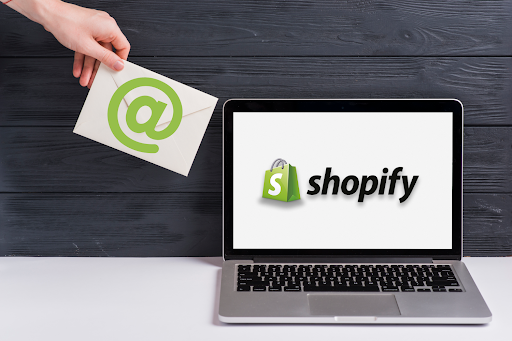Your Shopify store may be looking great, but are people actually converting? They’re not, and that is where proven data is your new best friend. The below ten titan tips, supported by evidence, show what actually drives sales.
Contents
- 1 1. Partner Up for Local Success
- 2 2. Loading Time Still Rules the Game
- 3 3. Checkout Simplicity Cuts Cart Abandonment
- 4 4. Clear CTAs Get Clicks
- 5 5. Use Scarcity Without Sounding Pushy
- 6 6. Mobile Optimisation Is Non-Negotiable
- 7 7. Social Proof Builds Instant Trust
- 8 8. A/B Testing Is the Unsung Hero
- 9 9. Use Smart Apps That Add Value
- 10 10. Track & Optimise Based on Benchmarks
- 11 Conclusion
1. Partner Up for Local Success
Hiring experienced developers to consult on bugs can do more than just correct errors; they can drive conversion. As per new studies, merchants who partnered with Shopify partners Manchester experienced a 24% uplift in sales for 90 days. Why? Local expertise, improved design, improved load times, and navigation that is customer-centric. These factors lower friction and build trust. A local touch simplifies the user experience, and smoother experiences translate into higher conversions.
2. Loading Time Still Rules the Game
A Portent survey found that a page loading in less than two seconds converts 2.5x to one that loads in five. Darn. Slower sites = lost sales. That’s the bitter truth. Each extra second lowers conversions by as much as 20%. So compress images, embrace a thin theme, and dump slow features. Don’t leave your shoppers waiting; chances are higher they won’t. Even a single second may be the difference between bouncing or buying.
3. Checkout Simplicity Cuts Cart Abandonment
The average Shopify cart abandonment rate is over 70%. Long, cluttered checkouts are normally the problem. When fashion brand Avenue streamlined checkout from seven to two steps, conversions increased 30%. The lesson? Keep it short. Offer guest checkout. Auto-fill fields. Take multiple payment methods. Progress bars also help by showing customers how close they are to finishing. If checkout is easy, more people will complete it.
4. Clear CTAs Get Clicks
“Buy Now” or “Add to Basket.” The wording matters more than you’d think. Stats show that buttons with clear, urgent calls-to-action can improve conversions by 14%. Don’t get fancy or vague. Use bold colours that stand out, and place CTAs where they’re easily visible. A/B test variations on high-traffic pages. And direction removes doubt, which removes hesitation.
5. Use Scarcity Without Sounding Pushy
Humans don’t like missing out. Displaying limited availability or countdown timers can trigger a sense of urgency and boost conversions by up to 9%. The pitfall, however, is honesty. Don’t fake it, it kills credibility. Real time-limited promotions or actual low stock warnings (“Only 3 left in stock!”) work. With free shipping offers or bundle sales, urgency is a convincing nudge, not a trick.
6. Mobile Optimisation Is Non-Negotiable
More than 60% of Shopify traffic is now from mobile. However, the majority of shops are still fixated on desktop views. Error. Mobile shoppers abandon cart quicker when forms get in the way or pages don’t resize. Facts attest mobile-optimised websites convert up to 2x more. Employ thumb-sized buttons, clean menus, and quick-loading media. Your mobile journey needs to be as smooth, if not smoother, as desktop.
7. Social Proof Builds Instant Trust
Reviews from customers, testimonials, and live sales alerts can increase trust levels by leaps and bounds. In a case study, incorporating customer reviews generated a 14% conversion gain. Let other individuals purchase and enjoy your products. Feature bestsellers and customer-generated content. Photo reviews and star ratings provide anxious buyers with the confidence they require. Trust is not created through slogans but through the voice of your customers.
8. A/B Testing Is the Unsung Hero
You may believe your copy or design is ideal, but until you’re testing, you’re merely taking a stab in the dark. A/B testing headlines, images, CTA buttons, or structure can be an eye-opener. One shop resized product photos and noticed a 12% boost in conversions. Utilize Google Optimize or Shopify’s innate capabilities to compare alternatives. Let the figures do the talking. Minor tweaks can offer big benefits.
9. Use Smart Apps That Add Value
Not all apps are created equal. Apps such as Nudgify, Growave, and Klaviyo drive conversions through nudges, loyalty points, and cart abandonment notifications. One case saw a 20% increase after using real-time nudges. Don’t get too excited; too many apps drag your site down. Only use those that assist in urgency, trust, or retention. If an app doesn’t actively support the customer journey, get rid of it.
10. Track & Optimise Based on Benchmarks
If you don’t know your conversion rate, how do you make it better? Shopify sites of 1.4% to 3.2% are great, and 2.5% is a reasonable middle-of-the-road goal. Benchmark yourself, and then aim higher. Use Shopify Analytics or Google Analytics to monitor which pages are converting and where they’re not. Then use what’s doing the trick on your site. Monitor. Adjust. Test. That’s the CRO cycle.
Conclusion
Conversion isn’t chance; it’s strategy, supported by data. Highlight pace, ease, simplicity, and trust. The suggestions herein aren’t speculation; they’re data-driven outcomes from actual Shopify stores. Implement them correctly, and your store will convert more clicks into customers.
